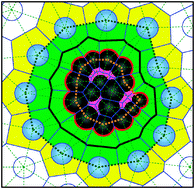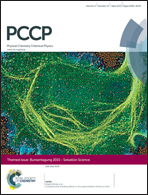Exploring volume, compressibility and hydration changes of folded proteins upon compression
Abstract
Understanding the physical basis of the structure, stability and function of proteins in solution, including extreme environmental conditions, requires knowledge of their temperature and pressure dependent volumetric properties. One physical–chemical property of proteins that is still little understood is their partial molar volume and its dependence on temperature and pressure. We used molecular dynamics simulations of aqueous solutions of a typical monomeric folded protein, staphylococcal nuclease (SNase), to study and analyze the pressure dependence of the apparent volume, Vapp, and its components by the Voronoi–Delaunay method. We show that the strong decrease of Vapp with pressure (βT = 0.95 × 10−5 bar−1, in very good agreement with the experimental value) is essentially due to the compression of the molecular volume, VM, ultimately, of its internal voids, VemptyM. Changes of the intrinsic volume (defined as the Voronoi volume of the molecule), the contribution of the solvent to the apparent volume, and of the contribution of the boundary voids between the protein and the solvent have also been studied and quantified in detail. The pressure dependences of the volumetric characteristics obtained are compared with the temperature dependent behavior of these quantities and with corresponding results for a natively unfolded polypeptide.

- This article is part of the themed collection: Bunsentagung 2015: Solvation Science

 Please wait while we load your content...
Please wait while we load your content...